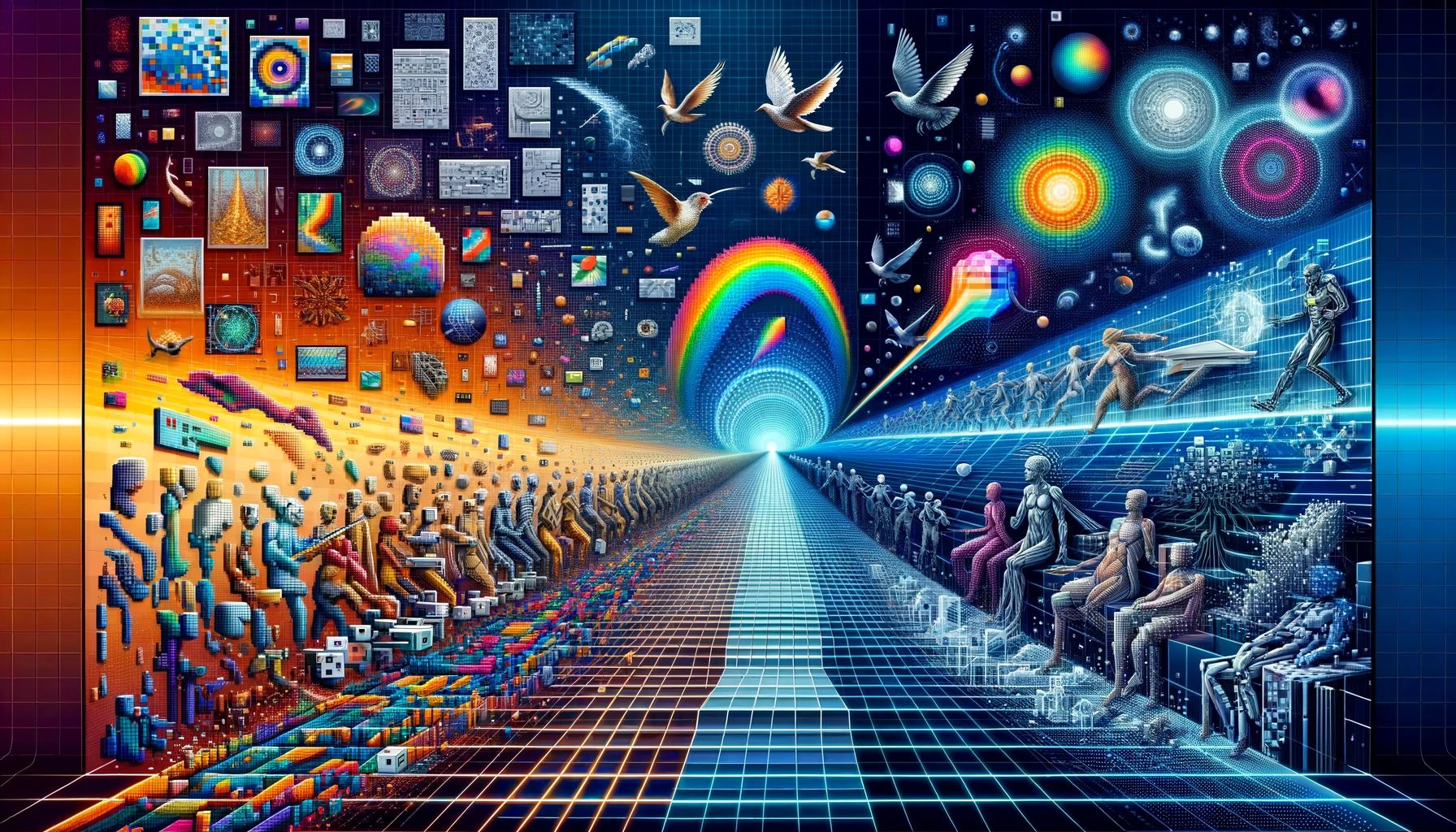Physical Address
304 North Cardinal St.
Dorchester Center, MA 02124
Physical Address
304 North Cardinal St.
Dorchester Center, MA 02124

The dawn of the 21st century has brought about a significant shift in how we perceive and create art. With the advent of technology, art has transcended beyond traditional mediums such as painting and sculpture, paving the way for digital art to take centre stage. This article explores the evolution of digital art in the 21st century, its influences, and its impact on contemporary culture.
Digital art is an artistic work or practice that employs digital technology as an integral part of its creation or presentation process. It encompasses a broad range of forms including digital painting, animation, virtual reality (VR), augmented reality (AR), interactive installations, and generative art.
The evolution of digital art can be traced back to the late 20th century when artists began experimenting with computer technologies. However, it’s in the 21st century that this form of art has truly flourished owing to advancements in software capabilities and hardware performance.
In the early 2000s, artists started exploring different facets of digital technology. They experimented with various software tools to create intricate designs that were impossible to achieve through traditional mediums. Artists like Jeremy Blake and Cory Arcangel gained recognition during this period for their innovative use of digital techniques.
The mid-2000s saw a rise in social media platforms like MySpace, Facebook and later Instagram which provided artists with new platforms to showcase their work. This period witnessed a surge in digital photography and graphic design due to easy access to editing tools such as Adobe Photoshop.
From the late 2000s to the present, digital art has explored new possibilities with developments in AR, VR and AI. Artists are now creating immersive experiences that challenge our perception of reality. Pioneers like Ian Cheng and teamLab have been instrumental in pushing these boundaries.
Digital art has had a profound influence on contemporary culture. It has democratised art by making it more accessible to people around the globe through online galleries and social media platforms. Moreover, it has blurred the lines between different art forms, encouraging interdisciplinary collaboration.
The future of digital art looks promising as technology continues to evolve at an unprecedented rate. We can expect further advancements in fields like machine learning and quantum computing to revolutionise how we create and consume art. With initiatives like NFTs (Non-Fungible Tokens), we might also see a shift in how digital artwork is owned and traded.
As we navigate through this exciting era of digital innovation, one thing is certain – digital art will continue to redefine our artistic landscape, presenting endless possibilities for creativity and expression.